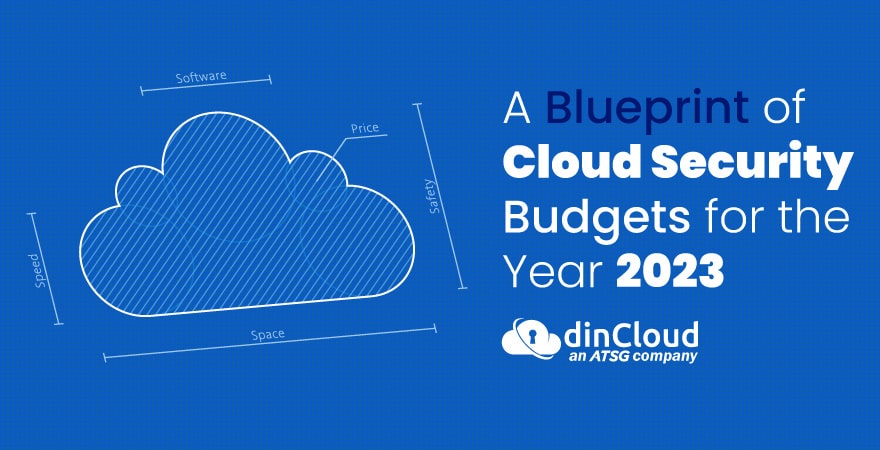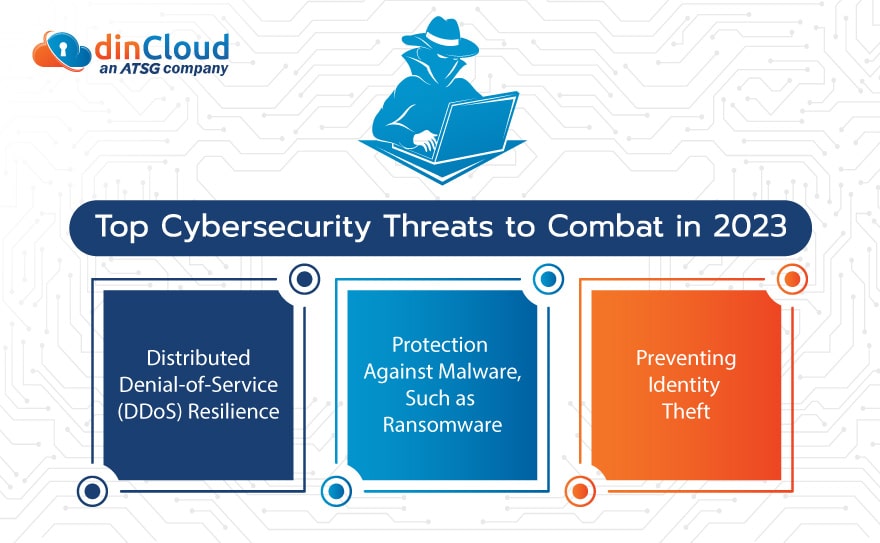There is often a debate about whether Cloud Computing environments are more secure than on-premise IT infrastructures. A simple answer to this question would be, yes. A more nuanced answer would be that Cloud security trends, such as network segmentation, data encryption, and strong configuration, make it a lot more secure than on-premise solutions.
That said, the massive exodus to the Cloud has left many businesses amidst a “tug of war” regarding which Cloud environment suits them perfectly. Many businesses are now opting for a mix of Public, Private and Hybrid Cloud environments. However, the predictable server usage, improved security, and better customizability of Private Cloud environments make it a preferred choice for many businesses.
Regardless of which Cloud environment enterprises might opt for, they must remember that spending on Cloud security will definitely deliver business value, over the short, mid, and long term horizon.

The Cloud Security Market Forecast for 2023
As we head closer to the year 2023, businesses must go through Forrester’s report, which predicts that a total of US $12.6 billion would be spent on Cloud security alone. A similar report estimated this number to be just at US $5.6 billion, back in the year 2018. A major reason for this growth in the Cloud security market can be attributed to a rapid surge in the Cloud Computing market itself.
A Senior Forecast Analyst at Forrester, Jennifer Adams, expressed her views in this regard that there is a lot of sensitivity around the security of personal data, and various businesses are also investing huge sums in threats vulnerability management.
Businesses do this because they fear regulatory penalizations, mainly due to stricter laws, such as the General Data Protection Regulation (GDPR). With more and more workloads shifting to the Cloud, security monitoring mechanisms for it have also become stricter, smarter, and more contextually aware than ever.
It is also pertinent to mention here that a lot of Cloud Service Providers (CSPs) are also providing many tools and technologies for the purpose of their database security. Some of the latest Cloud-based security trends are mentioned below:-
- Cloud Data Encryption (CDE)
- Categorizing and segmentation of data
- Access Control, both role-based and resource-based
- Encryption of data, at rest and in transit
- Detection of network and traffic anomalies
- Anti-viruses and Malware Prevention
- Web Traffic and IP Address Filtering
- Dedicated Virtual Local Area Network (VLAN)
Huge investments have also been channelized towards Cloud Workload Security (CWS). Since CWS can seamlessly automate and centralize various security controls across different platforms, it can be perfect for businesses that engage with Multiple CSPs. Market survey predicts that multiple Cloud deployments are forecast to achieve a 17% annual growth rate.
Top Cybersecurity Threats to Combat in 2023
C-suite executives, particularly Chief Information Security Officers (CISO), must be calculative and wise when it comes to allocating Cloud security budgets. This way, they will be able to effectively combat the following mentioned threats, that would be dominating the cybersecurity market space, over the next year.

1. Distributed Denial-of-Service (DDoS) Resilience
The looming danger of DDoS attacks remains a major security threat, and an ongoing topic of concern for many businesses. With the help of DDoS attacks, bad actors are able to flood their targeted websites, servers or databases, etc. with irrelevant bot traffic. This way, even the legit users are unable to access enterprise resources over the web.
In 2023, businesses need to have vigilant and effective cybersecurity measures in place to tackle the surge in DDoS attacks. This way, they will be able to achieve DDoS resilience and prevent any illicit traffic from disrupting their web traffic. The ultimate goal is to win the battle of “denial of service” against cyber criminals.
2. Protection Against Malware, Such as Ransomware
As a subset of malware, ransomware is much more damaging, as it locks out, encrypts, or erases data of the targeted system. If successful, the perpetrator of such an attack demands a ransom, in exchange for restoring access, or decrypting it.
Businesses should invest in data backups, asset inventory, software updates, network as well as endpoint patching, and network monitoring to detect anomalies. This will protect them against cyber miscreants that are looking for ways to unleash ransomware across the IT infrastructures of enterprises.
In addition, enterprises have also been investing in Machine Learning (ML) and Artificial Intelligence (AI) technologies, in a bid to fight against ransomware. ML algorithms analyze large amounts of data to detect suspicious activities, while the simulated human intelligence of AI can be harnessed to get alerts against emerging as well as resurging malware threats.
3. Preventing Identity Theft
In identity theft, bad actors or imposters try to get their hands on the targeted person’s Personally Identifiable Information (PII). They use this information to impersonate someone and gain unauthorized access to enterprise networks. Stolen identities are also used extensively by miscreants to commit financial scams, tax-related theft, or in extreme cases, even indulgence in criminal activities.
Businesses must invest in putting firewalls, anti-virus software, spyware protection software, malware, ransomware protection, etc. to prevent their customers’ and employees’ sensitive as well as confidential data against identity theft.
Myths Around Cloud Deployments
There is often a misconception about the risks associated with the security of Platform-as-a-Service (PaaS), Software-as-a-Service (SaaS), and Infrastructure-as-a-Service (IaaS) cloud models. These fallacies are reflected in Forrester’s research, where respondents were instructed to rate how they perceive the existing security of their IaaS, PaaS, and SaaS environments. They had to rate it on a scale of one to five, one being least concerned, and five being most concerned about security risks.
Surprisingly, nearly 57% gave four or five ratings for IaaS and PaaS, while 60% echoed their concerns about SaaS. Jennifer Adams said that the Cloud should not be touted as the biggest area for cybersecurity concerns. If anything, modern businesses must leverage Cloud Computing solutions, and invest in the right Cloud security mechanisms to make their IT infrastructure more secure.
Conclusion
It is important that businesses “brush their skills” in better understanding cyber attackers and the intention behind their actions. This way, businesses will be able to effectively tackle them, by staying ahead of their game.
The majority of industry experts are of the opinion that Cloud security measures must not be overlooked, as they can effectively address cybersecurity risks. Because of this, many businesses in 2023 would opt for the Cloud, as the best place to protect their data and get un-rivaled security.


